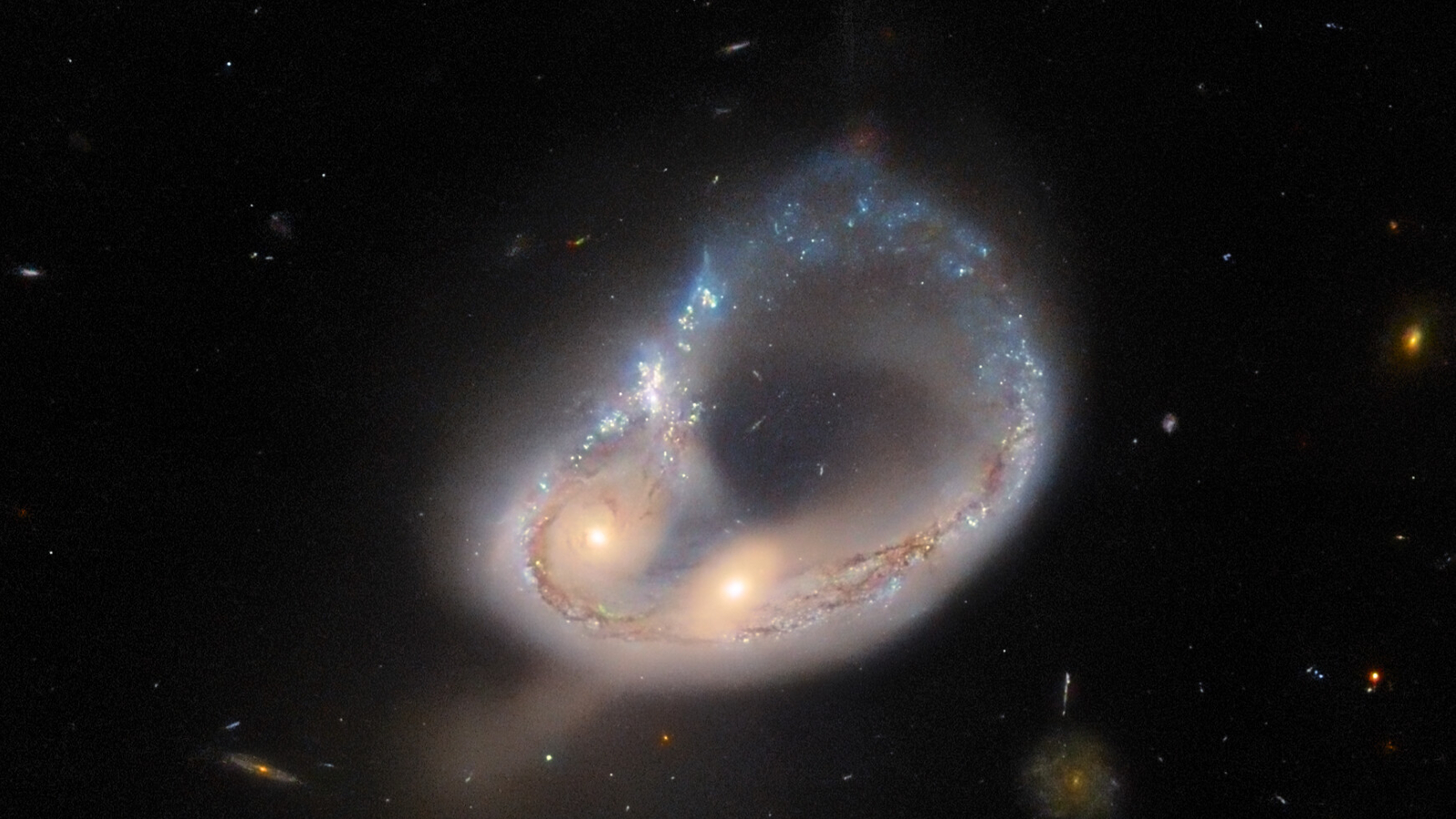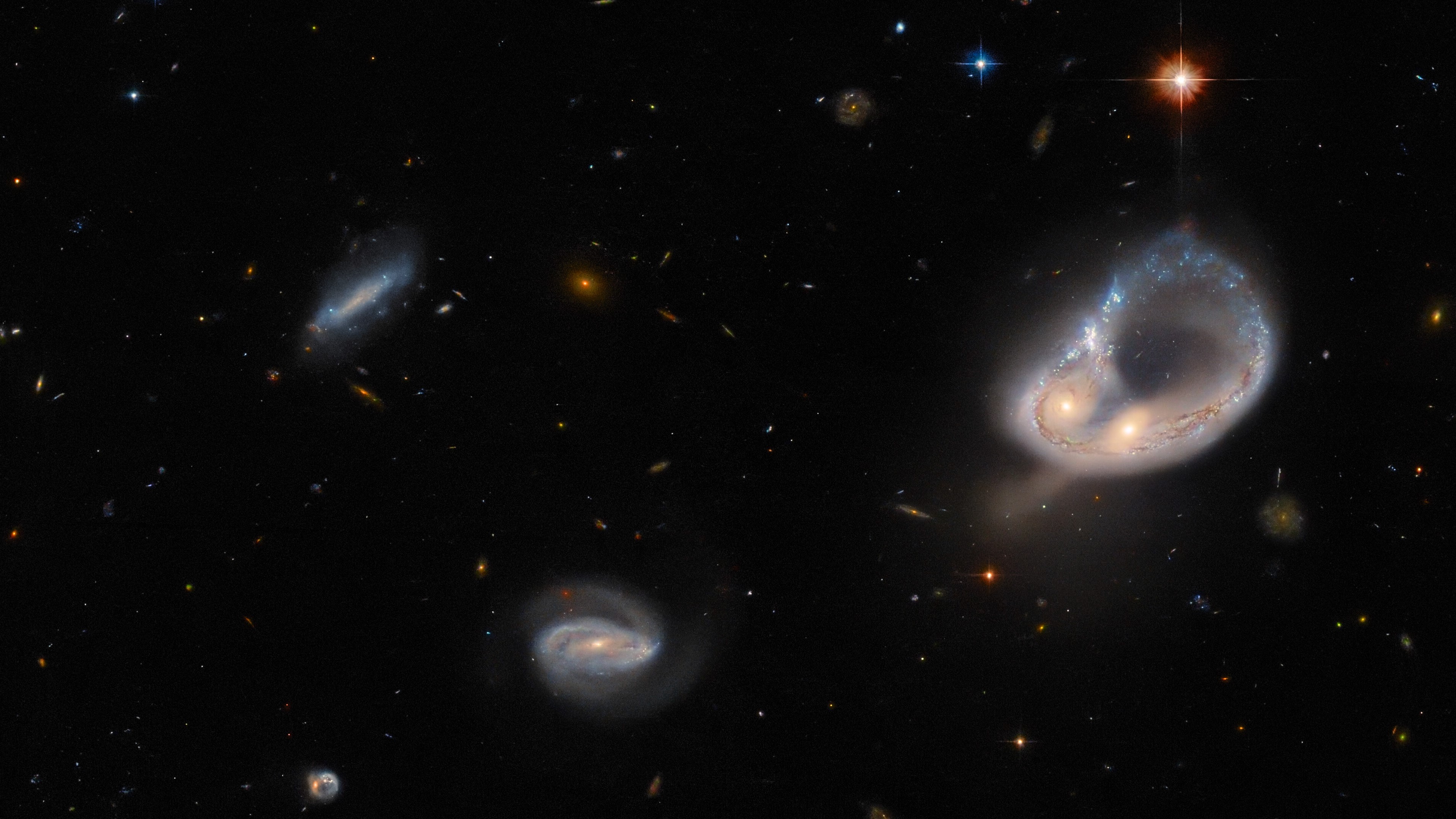Magnificent ring of stars captured by Hubble is the result of two galaxies in head-on collision
A pair of galaxies in the constellation Eridanus have been warped and twisted into a colossal, glowing ring of stars by the intense gravitational forces between them following a chaotic merger.

The Hubble space telescope has snapped a stunning shot of a pair of colliding galaxies that have been warped into a colossal, glowing ring of stars by the intense gravitational forces between them.
The entwined galaxies, collectively known as Arp-Madore 417-391, lie around 670 million light-years away from Earth in the constellation Eridanus, which is visible in the Southern Hemisphere.
The new image was captured by Hubble's Advanced Camera for Surveys (ACS), which is specially designed to seek out galaxies from the early universe, and was released Nov. 21 by the European Space Agency (ESA).
"The two galaxies have been distorted by gravity and twisted into a colossal ring, leaving the cores of the two galaxies nestled side by side," ESA representatives wrote online.
Related: Stunningly perfect 'Einstein ring' captured by James Webb Space Telescope
The cosmic collision is the latest in the Arp-Madore Catalog of Southern Peculiar Galaxies and Associations, an archive of more than 6,000 images of unusual galaxies that have been spotted in the southern skies.
In June 2019, Hubble spotted another galaxy merger, known as Arp-Madore 2026-424, which produced a similar but imperfect ring structure that resembled a ghost's face.
Sign up for the Live Science daily newsletter now
Get the world’s most fascinating discoveries delivered straight to your inbox.
Ring structures in galaxy mergers are extremely rare and only form when the two colliding galaxies smash into one another head-on rather than slowly being pulled together by gravity, according to NASA.

The rings are only temporary, lasting for around 100 million years. After that, the stars gradually get pulled back into their parent galaxies, which eventually merge into a singler new galaxy between 1 billion to 2 billion years later, according to NASA.
There are around 100 known galaxy merger rings, but very few form in such a perfect circle like the newly snapped Arp-Madore 417-391. The new ring's symmetrical shape is likely because the colliding galaxies were roughly the same size, which is hinted at by the roughly similar size and brightness of the two galactic centers in the image. However, the exact mechanics of how the ring formed is still unknown.
Arp-Madore 417-391 has been flagged up as a potential future target for the James Webb Space Telescope to image, according to ESA. Therefore, we may not have to wait long to learn more about this delightful cosmic disc.

Harry is a U.K.-based senior staff writer at Live Science. He studied marine biology at the University of Exeter before training to become a journalist. He covers a wide range of topics including space exploration, planetary science, space weather, climate change, animal behavior and paleontology. His recent work on the solar maximum won "best space submission" at the 2024 Aerospace Media Awards and was shortlisted in the "top scoop" category at the NCTJ Awards for Excellence in 2023. He also writes Live Science's weekly Earth from space series.









